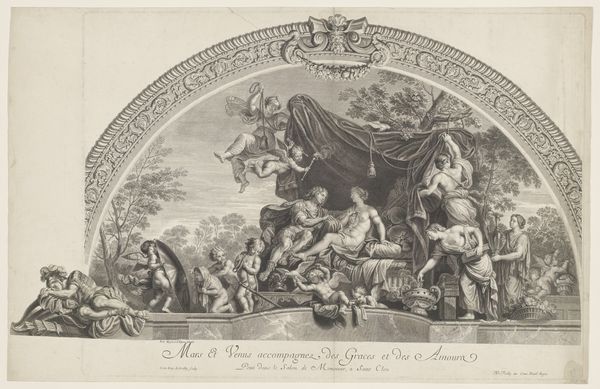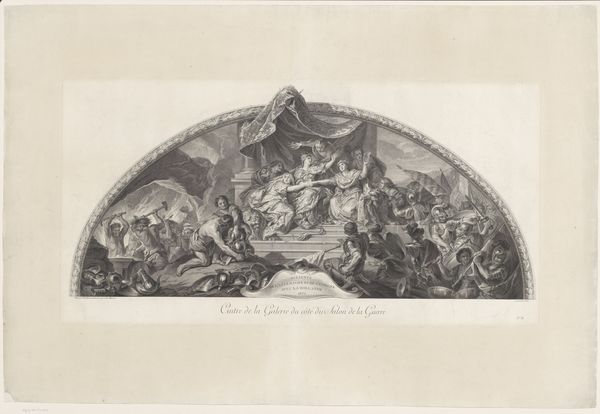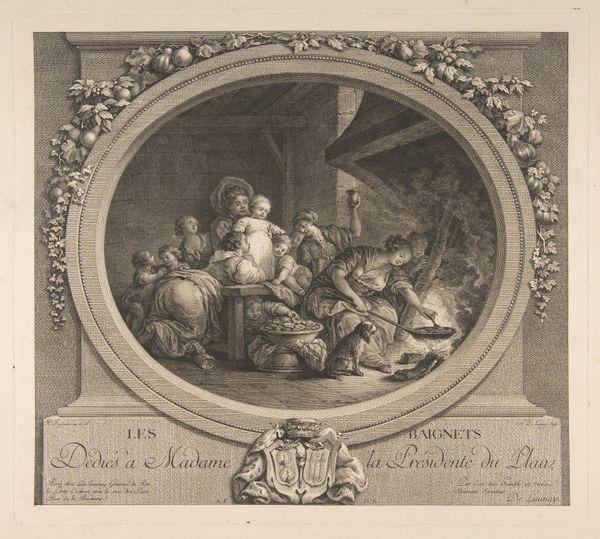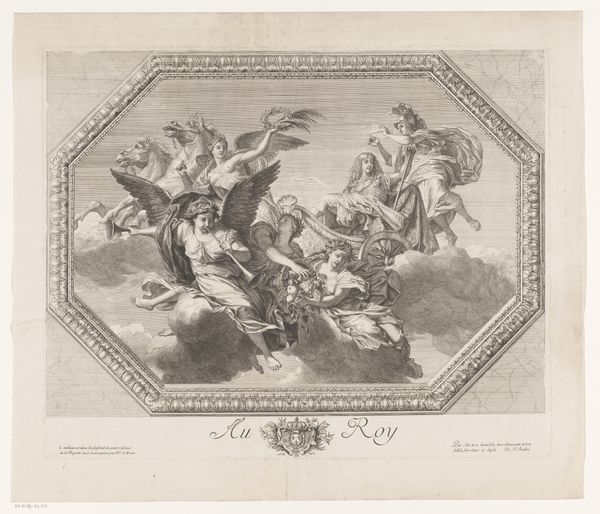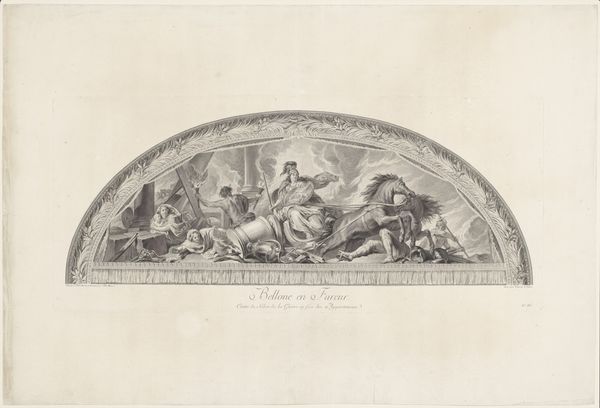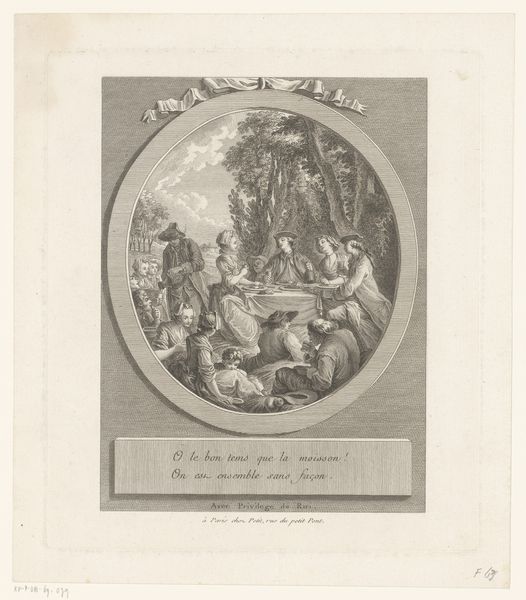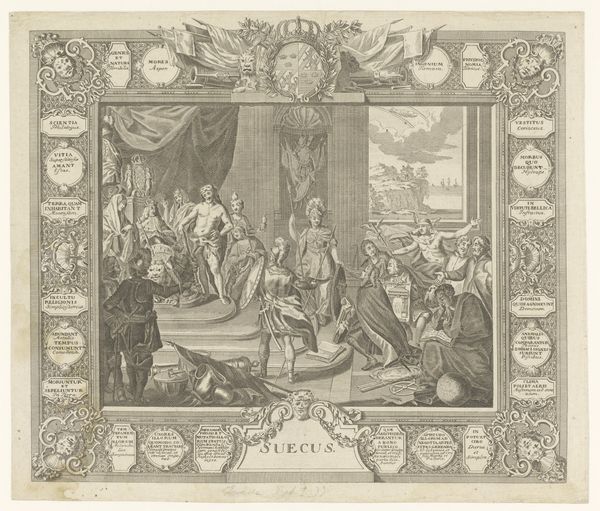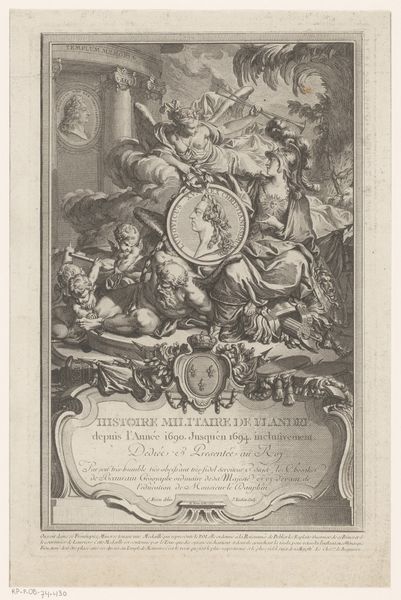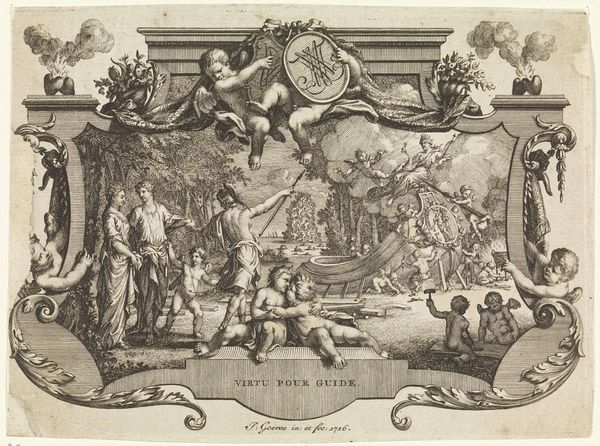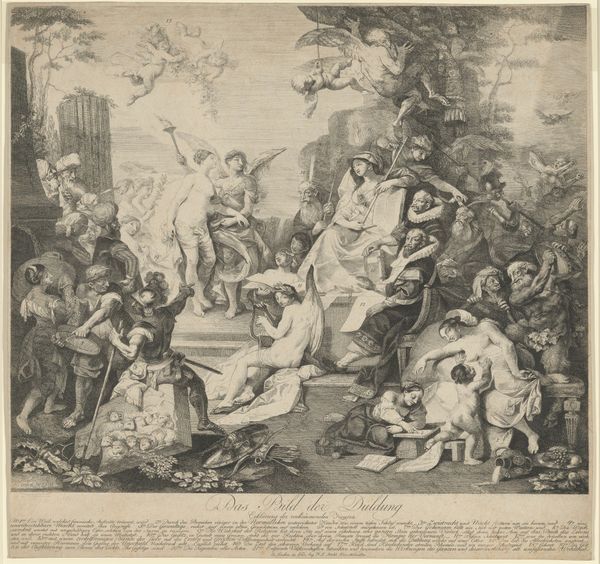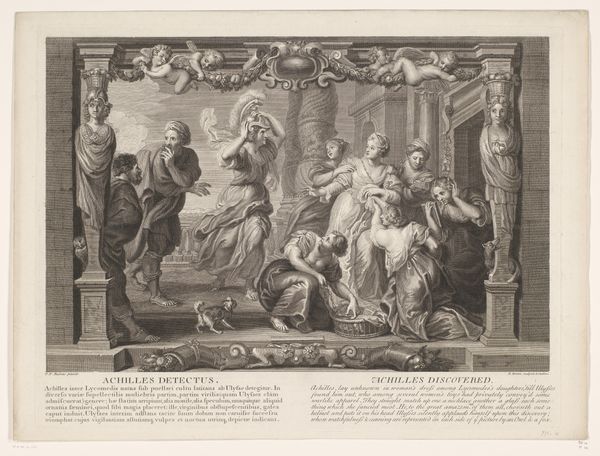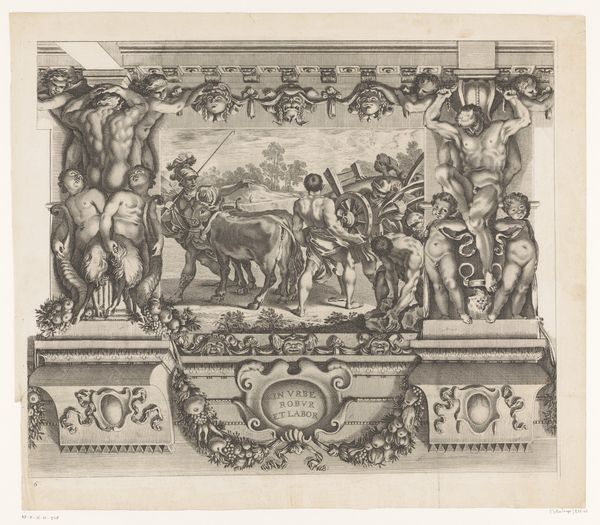
Dimensions: height 163 mm, width 191 mm
Copyright: Rijks Museum: Open Domain
Gabriel de Saint-Aubin made this etching, “Voltaire Arriving in Hell,” sometime in the 18th century. It depicts the famous Enlightenment philosopher being led into the underworld. In this print, Saint-Aubin engages with the controversies of his time. Voltaire, known for his sharp wit and criticism of religious dogma, was a divisive figure. Here, the artist imagines Voltaire's fate after death, arriving in hell, complete with devils and a judgment throne. The cultural context is crucial: France in the 1700s was a society grappling with new ideas about reason and religion, challenging the established order. Institutions like the Church and the monarchy faced increasing scrutiny. This image uses visual codes to communicate its message. Devils and flames signify damnation, while the judgment scene evokes religious authority. By placing Voltaire in this setting, the artist comments on the social and religious tensions of the era, questioning the consequences of dissenting from traditional beliefs. Understanding this artwork requires historical context and looking at the debates and social conditions that shaped its creation.
Comments
No comments
Be the first to comment and join the conversation on the ultimate creative platform.
